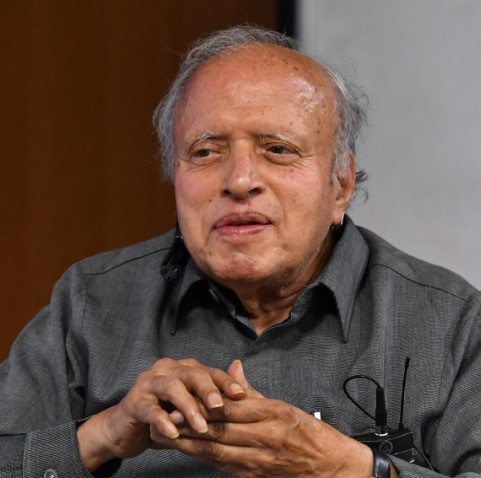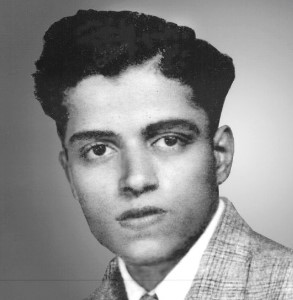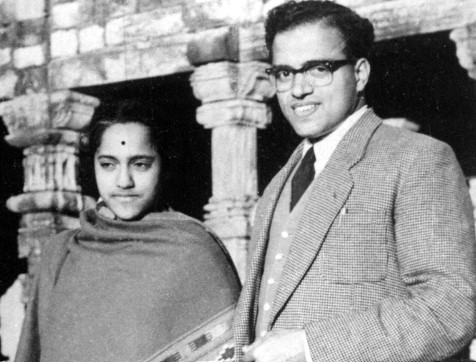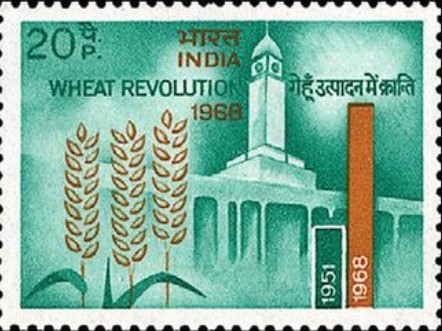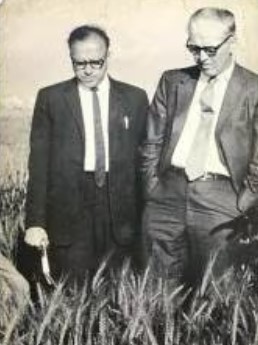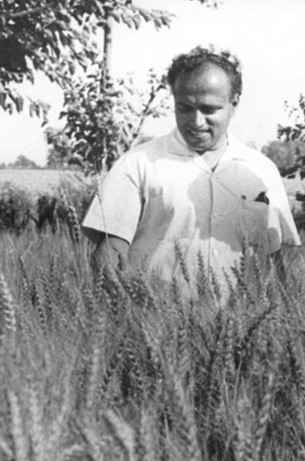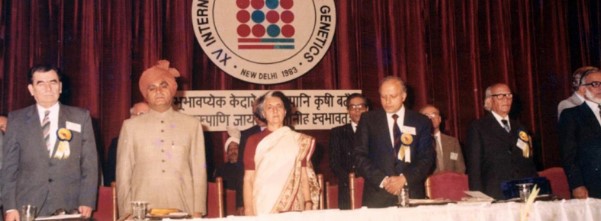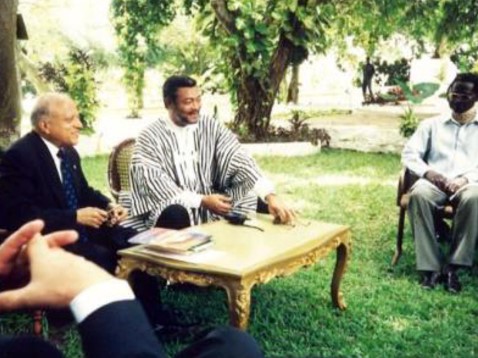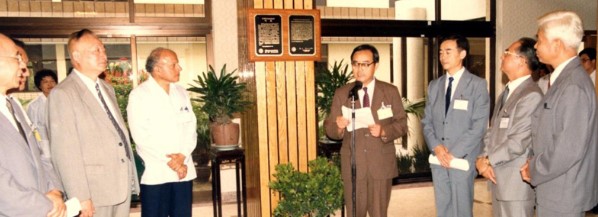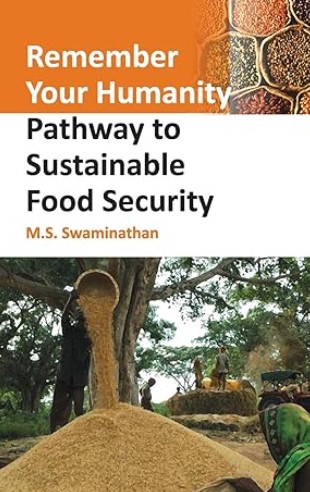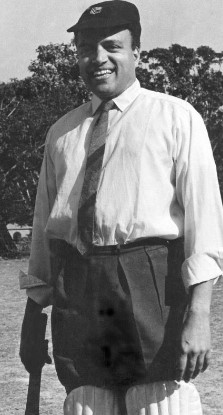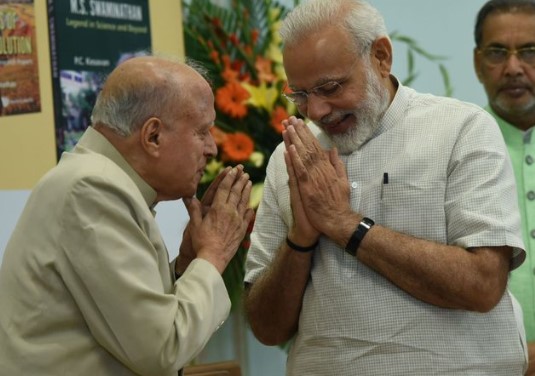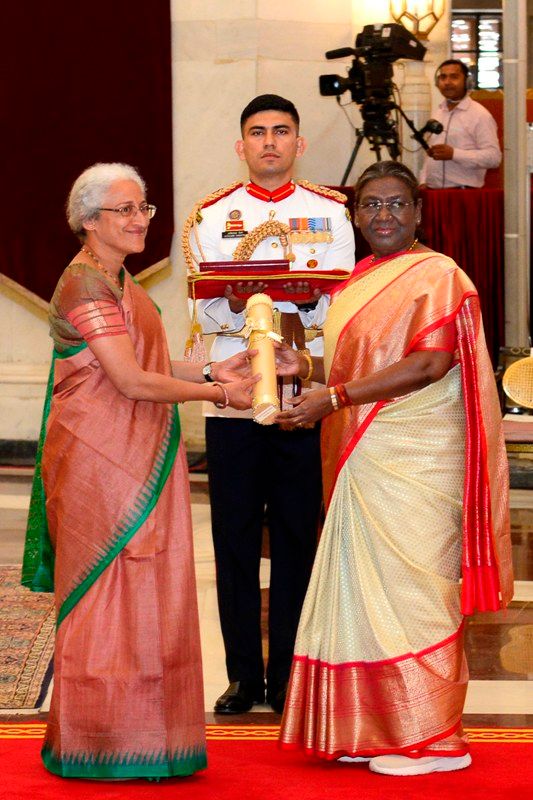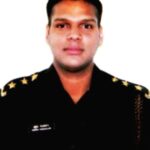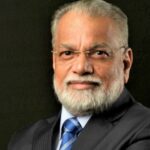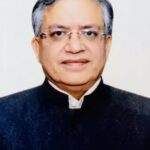M. S. Swaminathan Age, Death, Wife, Family, Biography
| Bio/Wiki | |
|---|---|
| Full name | Mankombu Sambasivan Swaminathan [1]Live Mint |
| Profession(s) | Agronomist, Agricultural Scientist, Geneticist, Administrator, and Humanitarian |
| Known for | Being the 'father of the Green Revolution' in India |
| Physical Stats & More | |
| Height (approx.) | 5' 6" (167 cm) |
| Eye Colour | Black |
| Hair Colour | Grey |
| Career | |
| Fields of Work | • Botany • Plant genetics • Genetics • Cytogenetics • Ecological economics • Plant breeding • Ecotechnology |
| Awards, Honours, Achievements | • He is the recipient of the Padma Shri, Padma Bhushan, Padma Vibhushan, H K Firodia, Lal Bahadur Shastri National, and the Indira Gandhi Prize awards. • Shanti Swarup Bhatnagar Award (1961) • Mendel Memorial Medal from the Czechoslovak Academy of Sciences (1965) • Ramon Magsaysay Award (1971) • Albert Einstein World Science Award (1986) • World Food Prize (1987) • Tyler Prize for Environmental Achievement (1991) • Four Freedoms Award (2000) • Planet and Humanity Medal of the International Geographical Union (2000) • Order of the Golden Heart of the Philippines (2002) • Order of Agricultural Merit of France, the Order of the Golden Ark of Netherlands (2002) • Award for International Co-operation on Environment and Development by China (2002) • The B. P. Pal Centenary Award (2006) • An agricultural think-tank in India named an annual award after Swaminathan (2014) • Royal Order of Sahametrei of Cambodia (2016) • Bharat Ratna (2024) |
| Personal Life | |
| Date of Birth | 7 August 1925 (Friday) |
| Birthplace | Kumbakonam, Madras |
| Date of Death | 28 September 2023 |
| Place of Death | Chennai, Tamil Nadu, India |
| Age (at the time of death) | 98 Years |
| Death Cause | Age-related illness [2]The Hindu BusinessLine |
| Zodiac sign | Leo |
| Nationality | Indian |
| Hometown | Kumbakonam, Madras |
| School | Catholic Little Flower High School in Kumbakonam |
| College/University | • Maharaja's College in Trivandrum, Kerala • Agricultural Science at the University of Madras • Indian Agricultural Research Institute in New Delhi |
| Educational Qualification(s) [3]Live Mint | • Bachelors degree in zoology at Maharaja's College in Trivandrum, Kerala • Bachelor of Science degree in Agricultural Science at the University of Madras • Genetics and plant breeding at the Indian Agricultural Research Institute in New Delhi • Doctor of Philosophy (1952) |
| Caste | Tamil Brahmin [4]LinkedIn |
| Controversy | In the 1970s, Swaminathan's research on creating a new type of wheat sparked controversy due to errors in the study. A paper published in 2018 listed Swaminathan as an author, leading to criticism for its mistakes, although Swaminathan claimed minimal involvement in the paper. |
| Relationships & More | |
| Marital Status (at the time of death) | Widower |
| Marriage Date | Year, 1955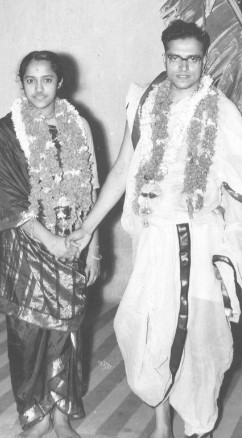 |
| Family | |
| Wife/Spouse | Mina Swaminathan (m. 1955; died 2022) |
| Children | Daughters- 3 • Soumya Swaminathan (a paediatrician) 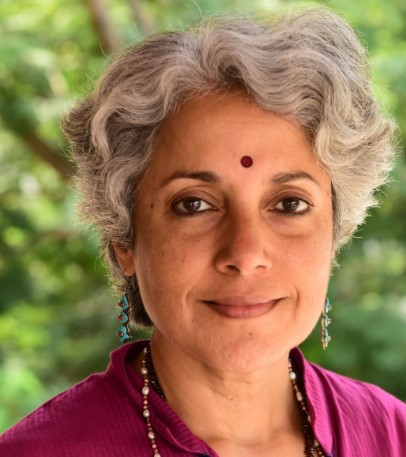 • Madhura Swaminathan (an economist)  • Nitya Swaminathan (gender and rural development) 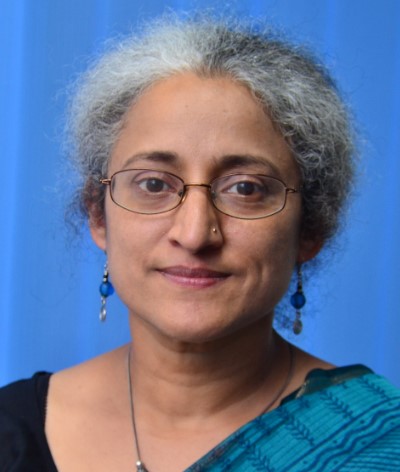 |
| Parents | Father- M. K. Sambasivan (general surgeon) Mother- Parvati Thangammal Sambasivan |
| Siblings | Swaminathan had two brothers and two sisters. |
Some Lesser Known Facts About M. S. Swaminathan
- After his father passed away when he was 11, he was brought up by his paternal uncle.
- During his school days, his parents wanted him to pursue medicine, so he began studying zoology. However, the effects of the Bengal famine and rice shortages during World War II inspired him to focus on agriculture instead.
- During his childhood, M. S. Swaminathan observed the impact that fluctuations in the price of crops had on his family such as the destruction that weather and pests could cause to crops as well as his family income.
- He grew up interacting with farming procedures and farmers as his extended family grew rice, mangoes, and coconut. His family was also involved in producing coffee.
- M. S. Swaminathan completed his matriculation at the age of 15.
- Although M. S. Swaminathan was selected for the Indian Police Service (IPS), he chose to pursue a fellowship in genetics in the Netherlands and his passion for agriculture.
- While studying at the Wageningen Agricultural University’s Institute of Genetics, M. S. Swaminathan was inclined toward the scientific approach to food production in India.
- He received a fellowship from UNESCO to study at Wageningen Agricultural University’s Institute of Genetics in the Netherlands for eight months.
- While at UNESCO, he focused on developing potato varieties resistant to pests and cold weather. This procedure was inspired by the disruptions in crop rotations caused by the demand for potatoes during World War II.
- Meanwhile, he also visited the Max Planck Institute for Plant Breeding Research in Germany, which inspired him to pursue a career in it.
- After ten years, M. S. Swaminathan observed major changes in Germany’s transformation in infrastructure despite the devastation of war.
- In 1950, Swaminathan went to study at the Plant Breeding Institute of the University of Cambridge School of Agriculture.
- During his doctorate, his thesis was ‘Species Differentiation, and the Nature of Polyploidy in certain species of the genus Solanum – section Tuberarium.’
- From the late 1950s onwards, he taught subjects like cytogenetics, radiation genetics, and mutation breeding at ICAR. He mentored many Borlaug-Ruan interns as part of the Borlaug-Ruan International Internship program.
- In the 1950s, Swaminathan contributed significantly to understanding potatoes’ origin and evolution. He explained its characteristics as an autotetraploid and its cell division behaviour, which had implications for genetic transfer.
- In 1951, he met Mina Swaminathan while they were both studying at Cambridge.
- In December 1952, he spent a week with F.L. Brayne, a former Indian Civil Service officer, whose insights into rural India influenced Swaminathan’s later work.
- After completing his education at Cambridge, Swaminathan spent 15 months in the United States. He studied a post-doctoral research associateship at the University of Wisconsin’s Laboratory of Genetics to assist in establishing a USDA potato research station.
- During his time at Wisconsin University, he contributed to developing frost-resistant potatoes.
- M. S. Swaminathan’s associateship ended in December 1953. Despite being offered a faculty position, he declined to move to India.
- In early 1954, he returned to India, but there were no job opportunities in his field. After three months, he got a chance to work temporarily as an assistant botanist at the Central Rice Research Institute in Cuttack.
- There, he worked on a program for hybridizing indica-japonica rice, which later influenced his work with wheat.
- After six months, M. S. Swaminathan joined the Indian Agricultural Research Institute (IARI) in New Delhi in October 1954 as an assistant cytogeneticist and worked there till 1972.
- Under his leadership, the Genetics Division at IARI became known for its research on mutagens.
- M. S. Swaminathan established a ‘Cobalt-60 Gamma Garden’ to study radiation mutation that aimed to enhance plant responsiveness to fertilizers. His work on the effects of radiation laid the foundation for future research in redox biology.
- He was concerned about India importing food grains as seventy per cent of the population relied on agriculture. He also noticed drought and famine-like situations arising in the country.
- He, along with Indian agronomists and geneticists, Gurdev Khush and Dilbagh Singh Athwal, made significant contributions to food production techniques in India.
- In the 1950s and 1960s, Swaminathan conducted fundamental research on the cytogenetics of hexaploid wheat. The wheat and rice varieties that he developed with Borlaug were fundamental to the Green Revolution.
- Once, during a media conversation, he shared the reason behind the failure of India to replicate the Green Revolution. He said,
Green revolution indicates the advance of production through the productivity pathway. This requires synergy between technology and public policy. What we need is not a second green revolution but an ever-green revolution leading to an increase in productivity in perpetuity without ecological harm.”
- M. S. Swaminathan worked with Norman Borlaug to introduce new varieties of wheat and rice, which helped prevent famine in India and Pakistan during the 1960s.
- In 1966, Swaminathan’s article on neutron radiation in agriculture was innovative and relevant to food irradiation.
- In 1971, the Government of India announced that the country was self-sufficient in food production. After that, the Indian government and Swaminathan began focussing on addressing other important issues like food access, hunger, and nutrition.
- In 1972, M. S. Swaminathan was appointed as the director-general of the Indian Council of Agricultural Research (ICAR) and also served as a secretary to the Government of India.
- During his tenure as director-general of ICAR, he emphasized the importance of technical literacy and established centres across India for this purpose.
- In response to droughts, M. S. Swaminathan organized groups to monitor weather and crop patterns, which aimed to protect the poor from malnutrition.
- In 1979, he was appointed a principal secretary, a senior position in the Government of India.
- The following year, he began working at the Planning Commission of India. He worked there for two years.
- His role in the Planning Commission included women and environmental considerations in India’s five-year development plans for the first time.
- In 1981, he was honoured by the Technical University of Berlin.
- In 1982, M. S. Swaminathan became the first Asian director general of the International Rice Research Institute (IRRI) in the Philippines, a position he held until 1988.
- At IRRI, he organized an international conference called ‘Women in Rice Farming Systems,’ which earned him the first award from the Association for Women in Development for contributions to integrating women in development.
- At IRRI, M. S. Swaminathan initiated efforts to cultivate rice with C4 carbon fixation capabilities, which would enhance photosynthesis and water usage. He also played a role in creating high-yielding basmati rice varieties.
- He often taught the importance of every part of the rice crop to the families involved in the rice-growing business.
- In 1984, M. S. Swaminathan began working as a president and vice-president of the International Union for Conservation of Nature and the World Wildlife Fund.
- In 1985, he was honoured by the Asian Institute of Technology (1985).
- As director general of the International Rice Research Institute, he won the first World Food Prize in 1987.
- After receiving this prize, he used its funds to establish the M.S. Swaminathan Research Foundation. During his prize acceptance speech, he highlighted the constant issue of hunger despite increased food production.
- He also emphasized the need for equitable distribution of power and resources to achieve a world without hunger.
- His efforts were recognized by notable figures such as Javier Pérez de Cuéllar, Frank Press, and President Ronald Reagan. Following Norman Borlaug, Swaminathan later chaired the World Food Prize Selection Committee.
- Swaminathan was the founder of the Nuclear Research Laboratory at the IARI and advocated for the establishment of several international agricultural research institutions.
- In 1991, he released the book ‘Science and Integrated Rural Development.’
- His Nuclear Research Laboratory included the International Crop Research Institute for the Semi-Arid Tropics in India, the International Board for Plant Genetic Resources (now Bioversity International) in Italy, and the International Council for Research in Agro-Forestry in Kenya.
- He played an important role in building and enhancing various institutions and providing research assistance to several countries, including China, Vietnam, Myanmar, Thailand, Sri Lanka, Pakistan, Iran, and Cambodia.
- Swaminathan served as co-chairman of the United Nations Millennium Project on hunger from 2002 to 2005 and led the Pugwash Conferences on Science and World Affairs from 2002 to 2007.
- He chaired the National Commission on Farmers in 2004.
- In 2005, Bruce Alberts, the President of the U.S. National Academy of Sciences, praised Swaminathan for his constant efforts and idealism, which inspired millions worldwide.
- Swaminathan aimed for a hunger-free India by 2007.
- He was an advocate for sustainable farming and became a world leader in the field of sustainable food security.
- In 2007, he was nominated to the Rajya Sabha by President A.P.J. Abdul Kalam.
- During his tenure, Swaminathan introduced The Women Farmers’ Entitlements Bill 2011 and advocated for the recognition of women farmers.
- Once, in an interview with a media house, he narrated the biggest challenges that Indian farmers faced. He said,
The biggest challenge is the economics of the farming on the one hand and inability to attract and retain youth in farming on the other.”
- Swaminathan then coined the term ‘Evergreen Revolution,’ anticipating sustainable productivity growth similar to the green revolution’s impact. He defined it as ‘productivity with perpetuity.’
- Swaminathan played a key role in the Green Revolution, especially in India.
- In his later years, he focused on initiatives to bridge the digital divide and communicate research on hunger and nutrition to policymakers.
- Gandhi and Ramana Maharshi had a profound impact on Swaminathan’s life. His family donated one-third of their 2000 acres of land to Vinoba Bhave’s cause.
- In 2010, he released the book ‘From Green to Evergreen Revolution: Indian Agriculture – Performance and: Indian Agriculture: Performance and Challenges.’
- In 2012, he published the book ‘Remember Your Humanity: Pathway To Sustainable Food Security.’
- His research laid the groundwork for developing new potato varieties, including frost-resistant ones.
- His genetic analysis of potatoes, focusing on features related to yield and growth, was crucial for increasing productivity. Swaminathan’s holistic approach to genetics gathered various aspects.
- His collaborations with Indian nuclear scientists facilitated access to research facilities, contributing to advancements in agricultural science.
- In an interview with a media house in 2011, Swaminathan mentioned that when he was young, he was inspired by Swami Vivekananda.
- In 2016, a building and a scholarship fund were named after him by IRRI.
- In 2017, Prime Minister Narendra Modi released Swaminathan’s book series ‘The Quest for a World Without Hunger.’
- In May 2019, he published the book ‘Major Flowering Trees of Tropical Gardens.’
- He liked playing cricket in his free time.
- After it was announced that he would be awarded Bharat Ratna in 2024, Prime Minister Narendra Modi posted an old picture of himself greeting the late Dr Swaminathan at an event on X. Modi wrote,
It is a matter of immense joy that the Government of India is conferring the Bharat Ratna on Dr. MS Swaminathan Ji, in recognition of his monumental contributions to our nation in agriculture and farmers’ welfare. He played a pivotal role in helping India achieve self-reliance in agriculture during challenging times and made outstanding efforts towards modernising Indian agriculture.
- On 30 March 2024, his daughter Dr. Nitya Rao accepted the Bharat Ratna award from President Droupadi Murmu on behalf of M. S. Swaminathan.
References/Sources:

